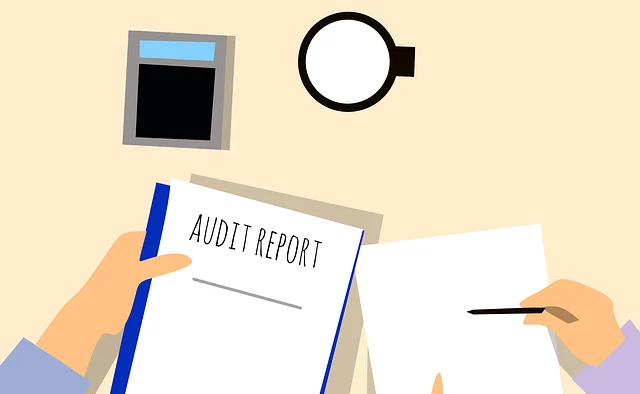How to Build Backlinks for Your Website: A Detailed Guide
Building backlinks is a crucial part of improving your website’s search engine ranking. Backlinks are like votes of confidence from other websites, showing search engines that your content is valuable and trustworthy. Let’s explore how to build backlinks for your website in a simple and engaging way.
Introduction
Definition of Backlinks
Backlinks, also known as inbound links, are links from other websites that point to your site. Imagine you have a lemonade stand, and your friends tell others how great your lemonade is. Their recommendations are like backlinks, boosting your reputation.

Benefits of Backlinks
Backlinks help improve your search engine rankings, drive more traffic to your site, and increase your site’s authority. Think of backlinks as a way for search engines to see that your website is popular and trustworthy.
FURTHER READING
Understanding Backlinks

Types of Backlinks
- Dofollow Backlinks: These links pass on link juice, which helps improve your search rankings.
- Nofollow Backlinks: These links don’t pass on link juice but can still drive traffic to your site.
- High-Quality Backlinks: Links from reputable and relevant sites that positively impact your SEO.
- Low-Quality Backlinks: Links from spammy or irrelevant sites that can harm your SEO.
How Backlinks Work

Backlinks pass link juice, a term used to describe the value or authority a link passes from one site to another. The more link juice you get, the better your site will rank in search results.
Imagine your lemonade stand gets mentioned by a popular food blog. This mention (backlink) tells search engines that your lemonade stand is worth checking out, boosting your online visibility.
Conducting a Backlink Audit

Why Audits are Important
Regular backlink audits help you identify and remove harmful links that could hurt your site’s reputation and SEO. Think of it as cleaning your room to get rid of things that don’t belong.
Tools for Backlink Audits
- Ahrefs: Provides detailed analysis of your backlinks.
- SEMrush: Offers comprehensive backlink auditing tools.
- Moz Link Explorer: Helps you explore your backlink profile and identify potential issues.
Steps to Conduct an Audit
- Collect Your Backlinks: Use tools like Ahrefs or SEMrush to gather a list of all backlinks pointing to your site.
- Analyze Backlink Quality: Check the domain authority and relevance of each backlink.
- Identify Harmful Links: Look for spammy or low-quality links that could harm your SEO.
- Remove or Disavow Bad Links: Contact site owners to remove bad links or use Google’s Disavow Tool.
Tim runs a small blog. By using SEMrush to audit his backlinks, he found several low-quality links from spammy sites. He disavowed these links, and his search rankings improved.
Strategies for Building Backlinks
Content Creation

Creating High-Quality Content
Create valuable, informative, and engaging content that others want to link to. Good content is like a delicious lemonade recipe that everyone wants to share.
Types of Content that Attract Backlinks
- Blog Posts: Write in-depth, informative articles.
- Infographics: Create visually appealing and shareable infographics.
- Videos: Produce engaging and informative videos.
- Case Studies and Research: Share original research and case studies.
- How-to Guides and Tutorials: Provide detailed guides on various topics.
Emily wrote a blog post about “10 Fun Summer Activities for Kids.” Her engaging and useful tips attracted many backlinks from parenting blogs.
Guest Blogging
Finding Opportunities
Identify relevant blogs in your industry that accept guest posts. Think of it as finding friends who will let you share your lemonade recipe on their blog.
Pitching Your Ideas
Craft compelling pitches that outline the benefits of your post to the host blog’s audience. Make sure to explain why your content is valuable and interesting.
Writing the Post
Write high-quality, original content that provides value to the readers. Your goal is to make the readers say, “Wow, this is great information!”
Sarah, a fitness enthusiast, wrote a guest post on a popular health blog about “Healthy Smoothie Recipes.” This post earned her several backlinks to her own fitness blog.
4.3 Building Relationships
Networking with Influencers

Connect with industry influencers and bloggers who can link to your content. It’s like making friends with popular kids who can tell others about your awesome lemonade.
Engaging on Social Media

Use social media platforms to share your content and engage with your audience. The more people see and share your content, the more backlinks you’ll earn.
Participating in Online Communities
Join forums, discussion boards, and groups relevant to your industry and share your expertise. Being active in these communities helps you build relationships and earn backlinks.
Jake, a tech blogger, actively participated in tech forums and shared his insights. His helpful contributions earned him backlinks from other tech blogs.
Leveraging Existing Content
Updating Old Content
Refresh and promote older posts to attract new backlinks. Just like updating your lemonade recipe to make it even better, improving old content can attract more attention.
Broken Link Building
Find broken links on other sites and suggest your content as a replacement. This helps both you and the other site owner, making it a win-win.
Skyscraper Technique
Improve upon popular content to create a superior version and reach out to those who linked to the original. Make your content the best it can be, so others want to link to it.
Lily found a broken link on a popular travel site. She suggested her updated guide on “Top 10 Travel Destinations,” and the site owner replaced the broken link with hers, earning her a valuable backlink.
Local SEO and Directories
Local Business Listings
Submit your site to local business directories. This helps people in your area find your business more easily.
Industry-Specific Directories
List your site in industry-specific directories. This can boost your visibility within your niche.
Community Involvement
Sponsor local events or charities to earn backlinks from local news sites and event pages. Being involved in your community not only helps you get backlinks but also builds your reputation.
Mike’s bakery sponsored a local charity run. The event organizers linked back to his website in their promotional materials, earning him valuable backlinks and new customers.
FURTHER READING
Link Building Strategies: The Ultimate lists
Outreach Strategies
Email Outreach
Craft effective outreach emails to request backlinks. Be polite, explain the value of your content, and why it would be a good fit for their site.
Templates for Outreach
Provide sample templates for different scenarios, such as requesting a link to your content or offering to write a guest post.
Follow-ups
The importance of following up on your outreach emails and how to do it effectively. Sometimes, a gentle reminder can make all the difference.
Alex sent an outreach email to a popular blog asking for a backlink to his article on “Eco-Friendly Living Tips.” After a follow-up email, the blog agreed, and Alex earned a valuable backlink.
Measuring Backlink Success
Tracking Backlinks
Use tools like Ahrefs, Google Search Console, and SEMrush to monitor your backlinks. These tools help you see who is linking to your site and how it affects your SEO.
Analyzing Backlink Quality
Assess the quality of backlinks using metrics like Domain Authority (DA) and Page Authority (PA). High-quality backlinks from reputable sites are more valuable.
Adjusting Strategies
Tweak your backlink strategy based on your results to ensure continuous improvement. If something isn’t working, try a different approach.
Laura, a digital marketer, tracked her backlinks using Ahrefs. She noticed that her guest posts were earning the most backlinks, so she focused more on guest blogging.
7. Common Mistakes to Avoid

Buying Backlinks
The dangers of purchasing backlinks and how it can harm your SEO. Always focus on earning backlinks naturally.
Ignoring Nofollow Links
Why do nofollow links still matter and can drive traffic to your site. Even though they don’t pass link juice, they can still bring visitors.
Over-optimizing Anchor Text
The risks of using too many exact-match anchor texts and how to avoid it. It’s important to use a variety of anchor texts to make your backlink profile look natural.
Tony bought backlinks from a shady service and saw a temporary boost in rankings. However, his site was later penalized by Google, and his rankings plummeted.
Conclusion
Recap of Key Points
Summarize the main strategies for building backlinks, including content creation, guest blogging, relationship building, leveraging existing content, and local SEO.
Ongoing Efforts
Emphasize that building backlinks is a continuous effort and it is important to stay up-to-date with SEO trends.
Encouragement to Start
Motivate readers to start implementing these strategies to see improvements in their site’s performance. Remind them that building backlinks takes time and effort, but the rewards are worth it.
Emma started with just a few backlinks but gradually built up her profile by following these strategies. Today, her blog ranks high in search results and attracts thousands of visitors each month.
By following this comprehensive guide, you can build high-quality backlinks that will improve your website’s search engine rankings and drive more traffic. Remember, building backlinks takes time and effort, but the rewards are well worth it. Happy backlinking!

Md Hafijul Islam holds an MA in Marketing and Innovation from Anglia Ruskin University, UK. With expertise in search engine optimization, he has earned an Advanced SEO Certification from Simplilearn. His work focuses on innovative marketing strategies and optimizing digital presence. Md is passionate about helping businesses enhance their online visibility and reach. Connect with him on LinkedIn.

